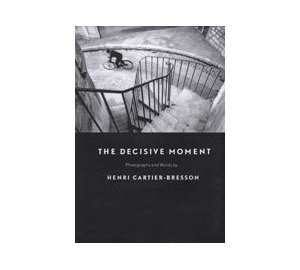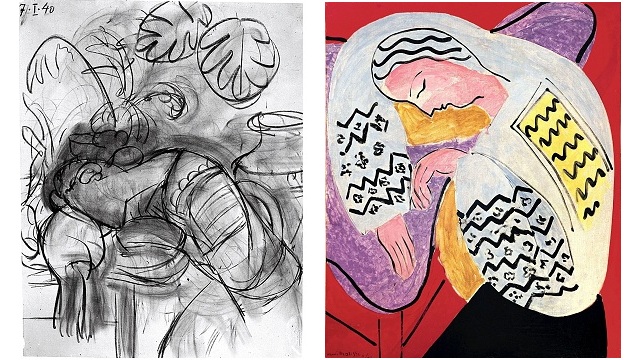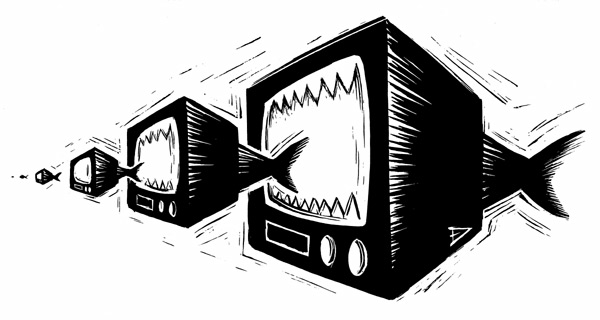A Warm Kiss: Cartier-Bresson Speaks in “The Decisive Moment”

“The camera is a weapon. The camera can be a machine gun. It can be a psychoanalytical couch. It can be a warm kiss,” opines Henri Cartier-Bresson in The Decisive Moment: Photographs and Words by Henri Cartier-Bresson, the 1973 film production recently re-released by Microcinema to coincide with Henri Cartier-Bresson: The Modern Century at the Museum of Modern Art, New York. Speaking in fluent English, Cartier-Bresson describes in vivid, impressionistic phrases the nature of his art as 69 of his most memorable images appear on the screen. The effect is, indeed, like a machine gun in its rapid fire, like a psychoanalytical couch in its insight into the human condition, and, perhaps most importantly, like a warm kiss in its intimacy and pure sensual joy.
For a photographer, Cartier-Bresson thought much like a painter. “For me, photography was a means of drawing,” he explains in the film. “An immediate sketch, and there’s no way to correct it. If you have to correct it, it’s the next picture.” Later, Cartier-Bresson admits that his “training was in Surrealism… But I never mentioned Surrealism. That’s my affair.” Fearing the stigma of Surrealism found in certain circles, Cartier-Bresson instead falsely wore the mantle of a photojournalist. Like a great Surrealist painter, Cartier-Bresson allowed the imagination to exert control over the intellect. “Facts are not interesting… it is the point of view that’s interesting,” he explains. The facts of whom and what appearing in the photos always take a back seat to the sensual pleasure of how the geometry clicks perfectly into place. A moment before or after, and the image fails. Here lies the decisiveness of “The Decisive Moment.”
Cartier-Bresson disliked the title The Decisive Moment given to his early book of photographs. A truer translation from the French would have been “images on the run.” Cartier-Bresson’s photographs capture decisive moments, but always within the fluid progress of life, as life itself runs its course. Given a choice of the two sides of the paradox of stillness and movement, Cartier-Bresson would always choose movement, the pulse of life.
Perhaps the most fascinating section of the film comes when Cartier-Bresson explains his approach to the portrait. Seen at face value, portraits would appear to be all stillness and no movement, yet Cartier-Bresson remarks how he would invade the subject’s habitat and linger like a cat, always on tiptoe and ready to pounce on the telling incident that would speak volumes of the sitter. “You have to try to put your camera between the skin of a person and his shirt,” he says, giving you a sense of how intimately he could place his imaginative eye to the heart of his subject.
“There’s a great anxiety in this profession,” Cartier-Bresson says of photography. “You’re always wondering what’s going to happen. What? What? What?” Watching the greatest hits of Cartier-Bresson roll past as his words wash over you, you, too, ask “What? What? What?” The anxiety of the influence to match Cartier-Bresson never creeps into your consciousness. Instead, any anxiety you feel comes from the instant need to see the world as he saw it, with all its infinite beauty and never-ending possibility. The Decisive Moment becomes an audio-visual valentine to life itself. Take a moment to look and listen and pucker up to the potential for magic in every moment ala Cartier-Bresson.
[Many thanks to Microcinema for providing me with a review copy of The Decisive Moment: Photographs and Words by Henri Cartier-Bresson.]





